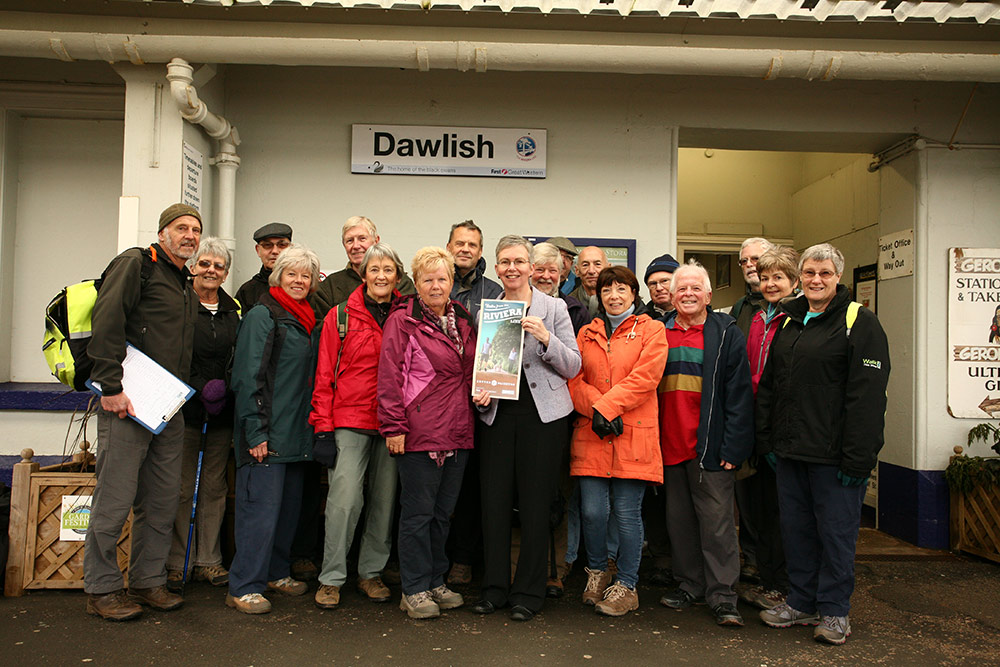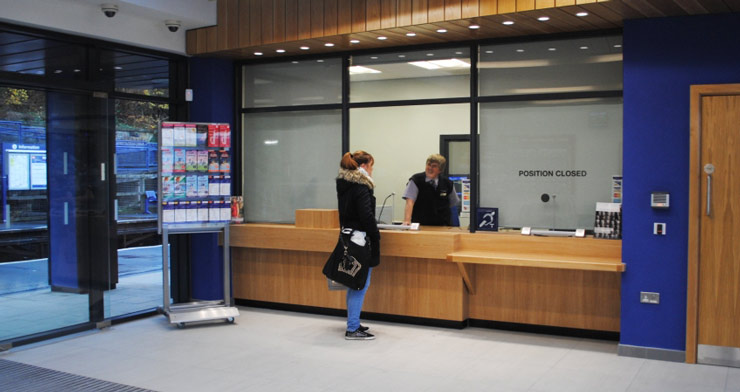As part of the Citizens’ Rail project, a new booklet has been developed to encourage more people to enjoy walks from stations on The Riviera Line (Exeter to Paignton).
[divider type=”default” vspace=”20px” hspace=”0%” /]
The free booklet has been produced by the Devon and Cornwall Rail Partnership and brings together a selection of six self-guided walks. Included are walks from Starcross, Dawlish Warren, Dawlish and Teignmouth stations. It is part of the promotional campaign being run for the line by the Devon & Cornwall Rail Partnership as part of the EU Interreg IVB Citizens’ Rail project. See a PDF copy of the leaflet (3MB):
Celia Minoughan, the Partnership’s Riviera Line Project Officer said:
“The booklet is a great companion for people who like exploring South Devon. There are some fabulous walks to explore along the Riviera Line, and this is just a taster of what is out there.”
At Dawlish station this week Celia was joined by walkers from the Dawlish Walk This Way group at the start of their weekly Wednesday walk. Nigel Rhys, a walk leader from Walk This Way, said:
“We welcome the Walks from the Riviera Line booklet. Every week we lead up to 40 people on walks from Dawlish Station, including the Dawlish Town Trail featured in the booklet. A few of our group regularly come from Starcross by train to join us at Dawlish Station.”
30,000 copies of the “Walks from the Riviera Line” booklet have been printed and can be found at stations throughout the First Great Western network as well as local tourist information centres. Copies can also be obtained by emailing railpart@plymouth.ac.uk.
Local partners in “Citizens’ Rail” – which is 50% funded by the EU’s Interreg IVB programme – include Devon County Council, Torbay Council, First Great Western, Plymouth University and the Devon & Cornwall Rail Partnership. For more information about ‘Walks from the Riviera Line’ and the Citizens’ Rail project, including how to get involved, contact Celia Minoughan at the Devon & Cornwall Rail Partnership on 01752 584777 or at celia@citizensrail.org.
[button size=”large” color=”#ffffff” background=”#d42053″ radius=”0px” type=”flat” link=”http://therivieraline.com/wp-content/uploads/2014/11/Walks-from-Riviera-Line_2_web.pdf” newwindow=”false” icon=”” ]Read the leaflet as a PDF (3MB)[/button]








